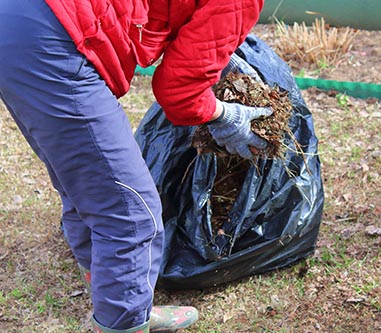How to Sanitize Your Garden

Did you know sanitizing your garden is important for plant health? “Sanitation” is the removal of plant material that can harbor pests. By removing debris from your garden at the end of the growing season you reduce the ability for pests and pathogens to negatively impact your garden next spring.
Tips for sanitizing your garden:
- Remove weeds
- Destroy crop residues
- Pick up fallen fruit
- Apply clean mulch
- Trim dead branches
- Remove stakes, row covers, irrigation lines and hoses, and other man-made objects
Sanitation will help prevent diseases and soilborne pathogens such as powdery mildew, a fungus that overwinters in fruiting structures on plant debris. When temperatures warm in the late spring, a secondary spore (conidia) forms and blows to new leaf tissue and causes infection. By reducing the debris in your garden you hinder the ability for pathogens and pests to reproduce.
Trimming branches helps to improve air movement in the spring and reduces the amount of dead tissue where pathogens can overwinter as does removing man-made objects in the fall.
Fall is also a great time to get your soil tested!.
Additional garden sanitation resources
Visit Utah State University Extension for more information
Get more information on Integrated Pest Management (IPM) from the University of Maine Extension Service.